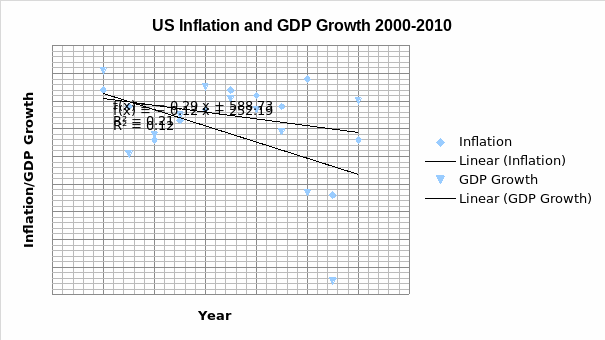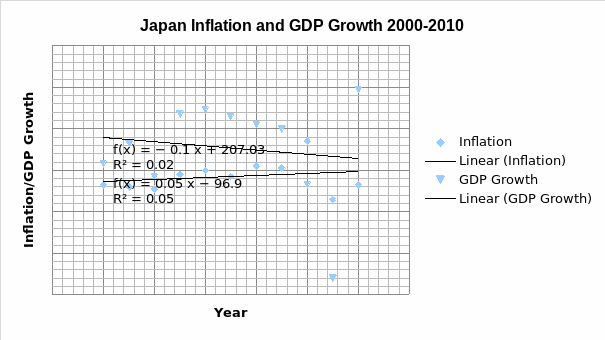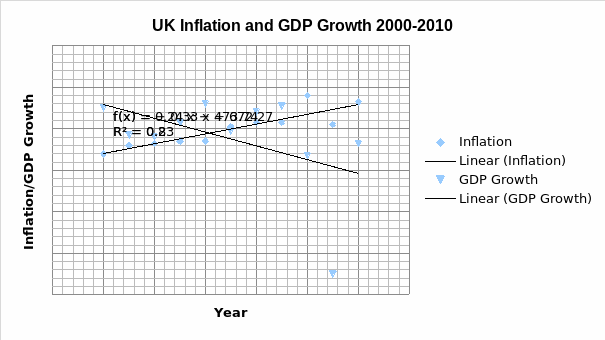Background
A key principle of macroeconomics is that the optimal choices are based on trade-offs (Ball, 1994). This principle applies to the formulation and execution of monetary policy as well. Failure by central banks to rein in on inflation results in more expected inflation. On the other hand, very tight control of inflation could decelerate economic growth. Hence, there should be a fine balance between price stability and economic growth objectives of the central bank to ensure that the rate of inflation in the economy is sustainable and, at the same time, the economic growth is fostered.
In his work, Some International Evidence on Output-Inflation Trade-offs published in American Economic Review, Lucas (1973) claimed that there existed a trade-off between inflation and economic output (Ball, 1994). As a result, in the 1960s and early 1970s, governments and economists alike held the notion that monetary policy authorities could increase economic output by allowing inflation to rise. However, the success of this theory happened to be short-lived. Indeed, allowing inflation to go up led to a fall in unemployment and higher economic output.
However, as inflation went up, households started to anticipate more inflation in the future. Consequently, workers started to press for higher wages as compensation for the expected rise in inflation. Firms that had no otherwise but to give in to the wage increase demands increased the prices of their products in order to recoup the rise in production costs. As production costs rose, the impact of inflation on economic output was annulled (Ball, 1994). From this empirical experience, therefore, many governments and economists are of the view that there exists no trade-off between inflation and the level of economic output. Rather, many policymakers consider changes in technology, the size of the labor force, the skills level of the labor force, and the structure of the labor market as the main factors affecting economic growth.
There is a general consensus amongst economists that inflation influences economic output, at least in the short-run. In the long-run, however, the impact of inflation on national output has not been proved (Ball, 1994). Some economic theorists premise that, in a situation of asymmetric information, i.e., an environment where inflation is rising, but households are not aware that this is the situation, inflation could affect economic output in the long-run. The aim of this research is to investigate the relationship between inflation and economic output in an environment of asymmetric information. The research will use the inflation and economic output data of various countries, including the US, to find out if such a relationship exists. Since countries are no longer increasing inflation to raise their economic output, it shall be assumed that the increases in inflation are spontaneous and, therefore, unanticipated.
Research Objective
The objective of this research is to establish whether a long-run trade-off exists between inflation and economic output under conditions of asymmetric information.
Research Question
Is there a long-run trade-off between inflation and economic output in an environment of asymmetric information?
Significance of the Research
The research findings will be important for policymakers and monetary authorities in the formulation and execution of monetary policy since they will indicate whether inflation has any role to play in determining the long-run economic output of the economy. The level of a country’s economic output is a crucial macroeconomic variable since it has an influence on the level of employment in the economy.
Literature Review
The debate, whether there exists a trade-off between inflation and economic output, has raged on for years. The Friedman-Phelps theory, for example, says such trade-off does not exist in the long run. Fischer (1993) and Lucas (1994), on the other hand, claim that inflation has a substantial impact on real GDP in the long-run (Ball, 1994). This controversy has had significant implications for policymakers around the world. In the US, for instance, contractionary monetary policy is usually opposed on the grounds that it slows the growth of real GDP (Drozd, Lukasz & Jaromir, 2012).
Some economists contend that attempts to stabilize inflation leads to increased variability in GDP and the level of unemployment. In contrast, efforts to stabilize business cycles cause more inflation. The inability of inflation to lead to higher economic growth or levels of employment is in line with the theory of rational expectations as well as the theory of sticky prices (Drozd, Lukas & Jaromir, 2012). According to the theory of rational expectations, the anticipated level of inflation translates into the actual or real level of inflation. The concept of sticky prices, on the other hand, contends that prices are sticky coming down than when rising. As a result, firms are very eager to adjust prices upwards when they expect a rise in inflation. On the contrary, when the rate of inflation is expected to fall, firms are very reluctant to adjust their prices downwards.
The popular view of the inflation-output trade-off favors price stability instead of allowing inflation to rise. Moreover, it has been shown that the positive effect of inflation on real economic activity in the short-run has adverse effects in the long-run. As a result, stabilizing prices should be the main objectives of monetary policy (Drodz, Gukasz & Jaromir, 2012). Existing literature claims that the level of long-run inflation should tend towards zero while the level of employment should move towards its natural rate. In practice, however, monetary authorities will never undertake a monetary policy of zero inflation. The reasons behind not taking such a policy are the interest rates and inflation trade-off as well as the concept of sticky prices. Inflation is inversely linked to interest rates and, thus, complete stabilization of prices would negatively affect economic growth and the level of employment in the economy.
While the labor market is usually characterized by monopoly, the commodity market is mainly characterized by perfect competition, with prices being completely flexible. Inflation leads to higher wage demands among workers, which causes firms to adjust their prices upwards. Any subsequent attempt to reduce inflation becomes impossible because of the phenomenon of sticky prices. The idea of price rigidity has been proved using economic statistics. The growth rates in the US private sector, for example, fall from 3 to 1.5 percent between 2008 and 2009. In the same period, unemployment in the sector increased from 5 percent to 10 percent. The differential between the fall in growth rate and the increase in the level of unemployment is a result of wages being downwardly rigid.
Empirical evidence always seems to indicate that there is no relationship between the level of inflation and economic growth or unemployment in the long-run. In the short-run, however, inflation may influence real economic activity and the level of employment in the economy. Unemployment is a good proxy of growth in real GDP since more employment results in higher GDP.
As a matter of fact, evidence shows that inflation is negatively related to real GDP in an economy, perhaps because inflation triggers more inflationary expectations. However, it has been shown that inflation can move economies towards their potential GDP.
Data and Charts (Figures in Percentage)
Source: International Finance Statistics (2010)



Method
This research has utilized secondary data of historical inflation and economic growth rates of three countries, namely the US, UK, and Japan. The choice of these countries was influenced by the fact that all of them are developed countries and, therefore, their levels of employment of factors of production are directly linked to the national output. In contrast, the level of employment of factors in developing countries is also influenced by the structure of the economy. Thus, it is not directly associated with GDP. The main source of the data was the International Finance Statistics provided by the IMF. The use of secondary data in this research possesses several advantages. First, it will save on time and cost of carrying out the research. Financial cost and time are very key considerations in any research process as they influence the quality of the research results. Second, the research will be based on very credible data as the data has been made available by a very credible financial institution, namely the International Monetary Fund (IMF). Thus, the findings of the research will be credible and could be used for further research.
Results
As the above data and charts depict, there is no direct link between inflation and growth in economic output. For instance, the variance of US inflation between the years 2000 and 2010 amounted to 1.39, while the corresponding variance of GDP was 4.41. During the same period, the variance of Japan’s inflation was 0.55, and for GDP, it was 6.25. Similarly, the variance of UK inflation for the period was 0.77, while its GDP growth variance amounted to 5.29. These results show that variation in inflation is not directly linked to variance in economic growth. The results also show that negative inflation was not necessarily accompanied by a negative economic growth rate and vice versa. Similarly, a positive inflation rate was not necessarily accompanied by positive economic growth.
Conclusion
From the findings of the research, it can be concluded that there exists no inflation and economic output trade-off in the long-run. Changes in the long-run economic output of a country are, thus, influenced by more real factors such as the growth of the size of the labor force, technological advancement, enhancement of the skills level of the workforce, among others. However, inflation could have an impact on real economic activity in the short-run as during this period, the economic agents have not formed concrete expectations regarding future inflation.
References
Ball, M. (1994). What Determines the Sacrifice Ratio in Monetary Policy. Chicago, IL: University of Chicago.
Drozd, Lukasz A., and Jaromir B. (2012). “Understanding International Prices: Customers as Capital.” American Economic Review, 102(1): 364–95. Web.
International Finance Statistics (2010). Country Reports. Web.
